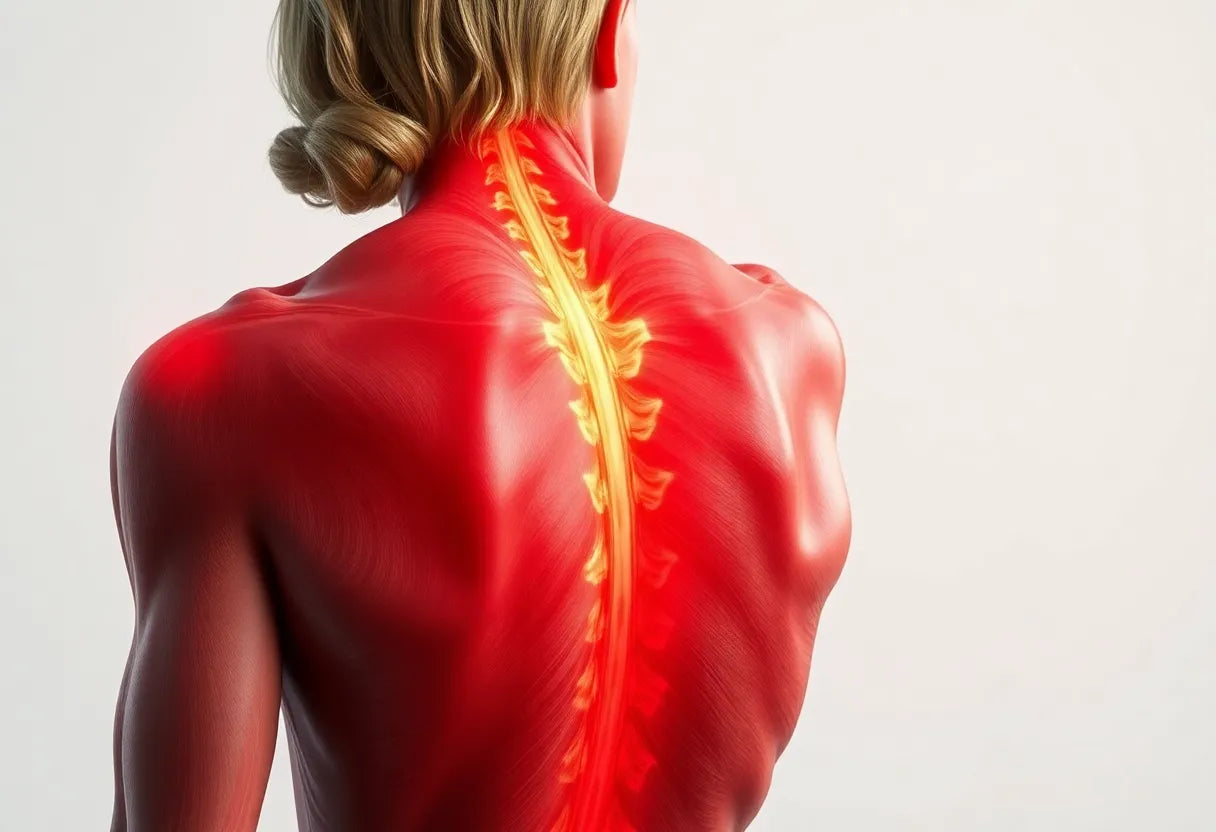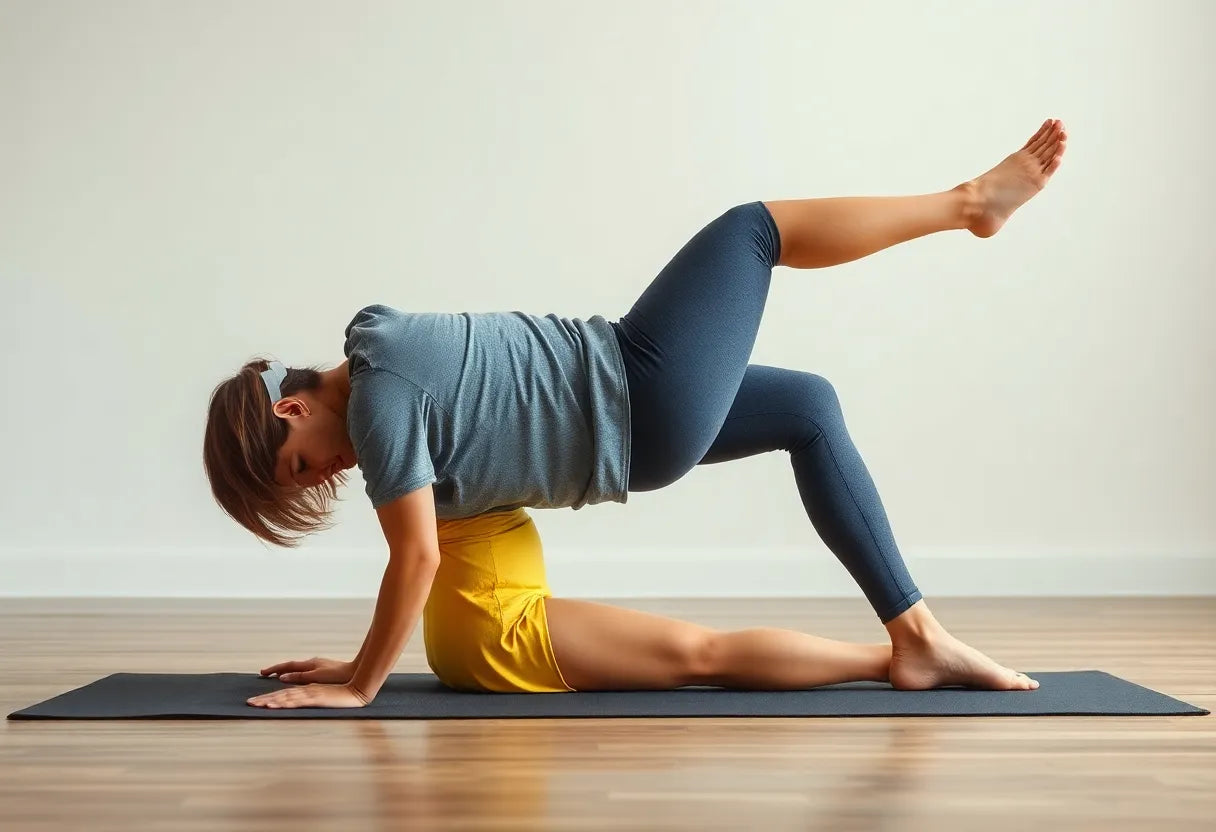Arthritis can significantly impact your daily life, especially when it affects the neck, leading to discomfort and reduced mobility. Understanding the link between arthritis and neck pain is crucial for managing these symptoms effectively. Arthritis, a condition characterized by inflammation of the joints, can manifest in the neck, resulting in stiffness, pain, and a limited range of motion. These symptoms can hinder daily activities and affect your overall quality of life.
Managing arthritis-related neck pain is essential, and one of the most effective ways to do so is through targeted exercises. These exercises are designed to reduce stiffness, improve flexibility, and alleviate pain, enabling you to maintain a more active lifestyle. By incorporating specific neck exercises into your routine, you can help manage arthritis symptoms and enhance your neck's mobility.
the role of exercise in arthritis management
Exercise plays a pivotal role in managing arthritis, including neck pain. Engaging in regular, targeted exercises helps maintain joint function, reduce stiffness, and improve overall mobility. For those with arthritis in the neck, specific exercises can be particularly beneficial. These exercises are designed to be gentle yet effective, focusing on stretching and strengthening the neck muscles to alleviate pain and increase flexibility.
It is important to note that safety and personalization are key when it comes to exercising with arthritis. Each individual's pain threshold and physical capabilities vary, so it's crucial to tailor exercise routines accordingly. Start with gentle movements and gradually increase intensity as your comfort level improves. Always prioritize safety by avoiding exercises that cause pain and staying within a pain-free range of motion.
Authoritative organizations like the Arthritis Foundation and Arthritis Society Canada advocate for exercise as a fundamental component of arthritis management. These organizations emphasize the importance of incorporating exercise into daily routines to help manage symptoms and improve quality of life. By following their guidelines and recommendations, you can safely and effectively incorporate neck exercises into your arthritis management plan.
In conclusion, understanding the connection between arthritis and neck pain is the first step toward effective management. By incorporating targeted neck exercises into your routine, you can alleviate pain, improve mobility, and enhance your overall well-being. Remember to prioritize safety, personalize your exercise routine, and consult with healthcare professionals if needed to ensure the exercises are suitable for your condition.
safety first: guidelines for exercising with arthritis
When dealing with arthritis, especially in the neck, safety should always be the priority. Before embarking on any new exercise regimen, it's essential to consult with a healthcare provider. This ensures that the exercises you choose are suitable for your specific condition and won't exacerbate any existing issues. Remember, the goal is to alleviate pain, not to cause more.
Key safety tips include avoiding exercises that cause pain, using slow and controlled movements, and staying within a pain-free range of motion. It's recommended to start with short daily sessions, performing 1–2 sets of 5–10 repetitions. This approach allows you to gradually build strength and flexibility without overstraining your neck.
exercise instructions: arthritis-friendly neck exercises
Incorporating specific exercises into your routine can significantly aid in managing arthritis-related neck pain. Below are detailed instructions for each recommended exercise, focusing on proper form and technique:
neck drop and raise
Begin by sitting or standing comfortably. Gently drop your head forward, bringing your chin to your chest. Hold this position for 5–10 seconds. Slowly raise your head back to the starting position, and then lean back slightly. Hold again for 5–10 seconds. Repeat this sequence five times. Avoid the backward movement if it causes any pain.
head tilt
While sitting or standing, gently tilt your head toward one shoulder, holding the stretch for 5–10 seconds. Return to the starting position and repeat on the opposite side. Perform this sequence five times on each side to help improve lateral flexibility.
neck rotation
Sit or stand with your back straight. Slowly turn your head to one side, holding the position for 5–10 seconds. Return to the center and repeat on the other side. This exercise should be repeated five times per side to enhance rotational mobility.
neck retraction (chin tuck)
Sit or stand with your spine straight. Pull your chin back as if you're making a double chin, ensuring your head stays level. Hold this position for 5–10 seconds and repeat five times. This exercise strengthens the deep neck flexors and helps maintain proper spinal alignment.
shoulder rolls
In a comfortable seated or standing position, roll your shoulders up, back, and down in a circular motion. Perform five repetitions, then reverse the direction. This movement helps maintain mobility and strength in the neck and upper back.
shoulder blade squeeze
Sit or stand with your arms at your sides. Squeeze your shoulder blades together, engaging the upper back muscles. Hold the squeeze for a few seconds and repeat as tolerated. This exercise aids in strengthening the muscles that support the neck.
side-bend and marionette stretch
Stand or sit comfortably. Gently stretch the side of your neck and obliques by bending your torso to one side, holding for a few seconds. Repeat on the opposite side. This stretch enhances flexibility and can be part of a comprehensive flexibility regimen.
active cervical rotation & stretch
While sitting or standing, focus on turning your head left and right, engaging in controlled movements. This exercise helps activate the range of motion without causing pain and is essential for maintaining neck mobility.
incorporating ergonomic aids
To further support your exercise routine and enhance comfort, consider using ergonomic aids. Products like neck pillows and ergonomic chairs can provide additional support during exercises, reducing strain and promoting proper posture. Anodyne offers a range of ergonomic products that can complement these exercises, ensuring you maintain comfort and safety as you work to alleviate arthritis-related neck pain.

Women's Posture Shirt™ - Black
Supports posture, relieves tension, and helps reduce pain in neck, shoulders, and back.

Men's Posture Shirt™ - Black
Improves posture, relieves pain and tension in neck, shoulders, and back.
By incorporating these exercises and ergonomic aids into your daily routine, you can effectively manage arthritis symptoms, improve neck mobility, and enhance your overall quality of life. Remember to always prioritize safety and consult with healthcare professionals to ensure these exercises are tailored to your specific needs.
exercises to avoid for neck arthritis
When dealing with neck arthritis, it's crucial to avoid certain exercises that may exacerbate symptoms. Aggressive or repetitive forward-leaning movements, such as those often seen in cycling postures, can increase strain on the neck. Similarly, exercises that involve heavy weights, particularly those targeting the trapezius muscles, can lead to flare-ups and should be approached with caution. Always prioritize movements that are gentle and within your pain-free range to ensure safety and effectiveness.
visual and video guides for arthritis-friendly neck exercises
To enhance your understanding and execution of neck exercises, consider utilizing visual and video guides. Reputable sources, such as Arthritis Society Canada, offer comprehensive video walkthroughs that demonstrate proper techniques and modifications for each exercise. These resources can be invaluable for ensuring you perform the exercises correctly and safely, providing a visual reference to accompany written instructions.
trends and data points in neck arthritis management
Recent trends in managing neck arthritis emphasize the importance of multimodal exercise therapy. This approach combines stretching, mobility, and strengthening exercises to effectively manage stiffness and pain. Research increasingly supports exercise as a first-line treatment for chronic neck pain, highlighting its role in improving quality of life for those with arthritis. By staying informed about these trends, you can incorporate evidence-based practices into your routine for optimal results.
frequently asked questions
how often should I perform these exercises?
Aim to incorporate these exercises into your daily routine, performing 1–2 sets of 5–10 repetitions each. Consistency is key to improving flexibility and reducing pain.
what should I do if I experience pain during an exercise?
If you experience pain, stop the exercise immediately. Consult with a healthcare provider to ensure the exercises are appropriate for your condition and to receive guidance on modifications if necessary.
can I use these exercises if I have other health conditions?
It's important to consult with a healthcare provider to tailor exercises to your specific health needs, especially if you have other medical conditions that may affect your ability to perform certain movements.
are there any tools or aids that can help with these exercises?
Yes, ergonomic aids such as neck pillows and ergonomic chairs can provide additional support and enhance comfort during exercises. These tools can help maintain proper posture and reduce strain on the neck.
By incorporating these exercises and guidelines into your routine, you can effectively manage arthritis-related neck pain and enhance your overall quality of life. Remember to prioritize safety, consult with healthcare professionals as needed, and utilize available resources for the best results.
Kilder
- Healthline. (n.d.). "Neck Exercises for Osteoarthritis."
- National Center for Biotechnology Information. (2023). "Clinical Guidelines for Neck Pain."
- Arthritis Foundation. (n.d.). "Neck and Back Exercises."
- Journal of Orthopaedic & Sports Physical Therapy. (2017). "Exercise Therapy for Neck Pain."
- North American Spine Society. (n.d.). "Cervical Exercise: The Backbone of Spine Treatment."
- Physiopedia. (n.d.). "Neck Pain: Clinical Practice Guidelines."
- Calderdale and Huddersfield NHS Foundation Trust. (n.d.). "Neck Pain Including Exercises."
- Oxford Health NHS Foundation Trust. (2014). "Neck Exercises."
- American Academy of Orthopaedic Surgeons. (2017). "Rehabilitation of the Spine."
- Harvard Health Publishing. (n.d.). "Practical Tips and Simple Exercises to Prevent Neck Pain."
- Kaiser Permanente. (n.d.). "Neck Arthritis Exercises."
- Arthritis Society Canada. (n.d.). "Arthritis Advice: Neck and Back Exercises."
- Mayo Clinic. (n.d.). "Arthritis."
- MyHealth.Alberta.ca. (n.d.). "Neck Arthritis Exercises."


















